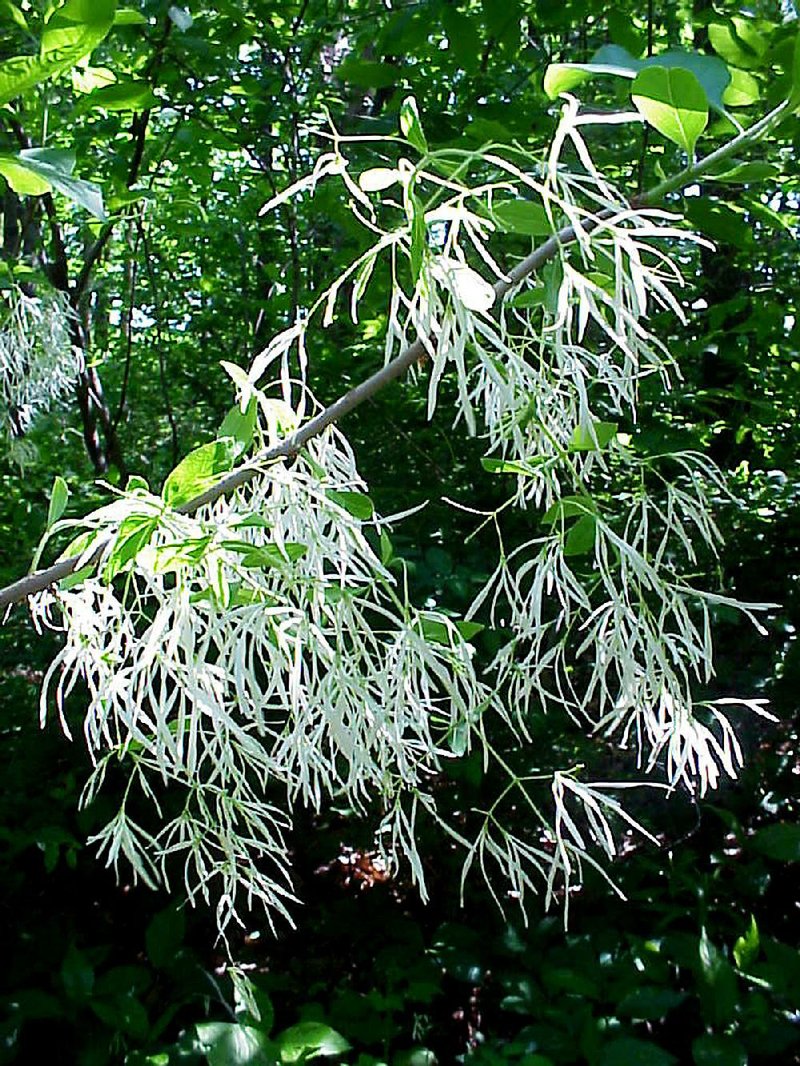Q When clearing out an overgrown area, I found a neglected tree peony. It has two stems, one of which has a flower bud and a few leaves. The other stem is bare but pliable. It is still in heavy shade. What needs to be done to rehabilitate this unexpected treasure?
A Since it produced a flower bud even when it was overshadowed, I think it is getting enough light to flower. Remove all the competition and mulch the plant. Fertilize after blooming and water this summer. Tree peonies are woody plants that regrow from the tips of the limbs, unlike the peonies most people grow that die back to the ground each year. Tree peonies normally need filtered sunlight or morning sun and afternoon shade. They struggle in the heat of the South, but if you can get them to survive, they have stunning blooms.
Q I have a 15-foot-tall white dogwood tree on a lot in Levy that I would love moved to our home in Sherwood. I planted it 10 or 12 years ago when it was 3 feet tall. It’s about 4 inches at the base of the trunk and gorgeous. I have been told it isn’t a good idea to move it and it probably would not survive. If I wanted to try, when would be the best time?
A Now is not a good time to move a tree. We are about to enter our hottest, driest season, and a transplanted tree would struggle. The best time to transplant existing trees is in the fall, just as the tree goes dormant. A large dogwood tree is not the most resilient tree. I usually recommend moving small dogwoods. If you want to try, I would suggest hiring someone with a tree spade that could make an easier job of it and increase the odds of success. A new tree would definitely be easier. And you could plant one now, if you can water well this season. Even with new trees, I think fall is an easier time to plant.
Q I live in Northwest Arkansas. I have four lacecap hydrangeas, about seven years in the ground. The emerging greenery was recently bitten by a late frost. Many of the stalks don’t have any new growth on them, maybe due to the harsh winter we had. Two of the hydrangeas look like they will have a pleasing shape, with a little pruning. The other two look highly questionable. What should I do about the two plants that do not appear likely to develop properly this year?
A Northwest Arkansas is prone to winter damage on Hydrangea macrophyllas, the big-leaf hydrangea. The flowers can take the form of mophead or lacecap blooms, but they set their flower buds in the late summer and fall, and if they are frozen by winter weather, no blooms this season. Many plants statewide took a hit this winter and most are now rebounding from the soil line, which means no blooms — unless you are growing the reblooming forms. Since winter-nipped plants will not bloom this year, they will grow quickly and could become quite large. Enjoy them as green plants. If you are looking at adding more hydrangeas, consider planting one of the new paniculata forms. They have showy blooms but bloom on new growth, so even if they get winter damage, they will flower.
Q I have this tree that volunteered years ago. It is covered in white flowers this spring. Would you please identify it for me?
A The plant in question is a fringe tree or Grancy Gray Beard (Chionanthus virginicus). It is a great native tree and has been particularly showy this spring. It has beautiful fringed white blooms for several weeks in the spring, followed by small blue berries on the female trees in late summer to fall.
Janet B. Carson is a horticulture specialist for the University of Arkansas Cooperative Extension Service. Write to her at 2301 S. University Ave., Little Rock, Ark. 72204 or email her at
jcarson@arkansasonline.com
